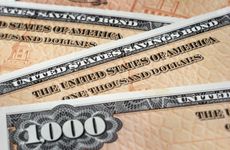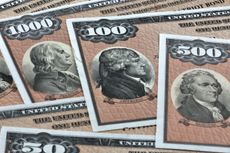4 Strategies to Make ETFs Work for You
We show you how to use exchange-traded funds to boost your returns and hedge your bets.

Cast your gaze over the financial innovations of the past few decades and you'll see a junkyard of broken-down contraptions. Interest-only mortgages, for example, decay alongside synthetic credit-default swaps and auction-rate securities. The cautionary tale in these instruments is plain: When it comes to your finances, you should run away from anything that smacks of being the latest hot new thing. If this kind of no-nonsense reasoning has led you to shun exchange-traded funds, we applaud your discretion. But 17 years after the first ETF hit the U.S. market, it's time to reconsider.
Notwithstanding the shocking collapse of dozens of funds on May 6, ETFs are, arguably, the most successful new financial product in recent memory (for more on the flash crash, see How to Buy and Sell an ETF and What Can Go Wrong With ETFs). Investors around the globe today hold more than $1 trillion in ETFs. Assets in ETFs held by U.S. investors have tripled in the past five years, to $793 billion. And about half of the 902 ETFs available to Americans were created in just the past three years.
So what's the big attraction? And what's the best way to fit them into your investment strategy? ETFs are simply mutual funds that trade on exchanges as stocks do. Short-term traders, who benefit immensely from the ability to buy and sell ETFs throughout the day, are likely a major force behind the explosion in ETFs' popularity. But serious-minded, long-term investors can find a lot to love, too. You can use them as a core holding or to fine-tune your investment mix. You can plug holes in your portfolio or get access to exotic securities and far-off corners of the world that historically have been difficult, if not impossible, for the average Joe to crack. In addition to convenience and flexibility, ETFs offer a number of other advantages:

Sign up for Kiplinger’s Free E-Newsletters
Profit and prosper with the best of expert advice on investing, taxes, retirement, personal finance and more - straight to your e-mail.
Profit and prosper with the best of expert advice - straight to your e-mail.
ETFs are cheap. Rock-bottom costs top the list. While the average annual expense ratio for actively managed mutual funds that invest in large U.S. companies is 1.42%, the average for ETFs that invest in similar stocks is just 0.48% a year. Nearly all ETFs are index funds, so they needn't shell out much for managers and analysts who pick securities (for a look at the relatively new field of actively managed ETFs, see ETFs With Hands-On Managers). And because most ETFs are index funds, they don't trade much, which holds down transaction costs. Moreover, "whether you're a huge institution or a small-time investor, you pay the same price" when you invest in an ETF, says Jim Ross, co-head of State Street Global Advisors' ETF business.
Commissions for buying and selling ETFs are falling. Although investors have traditionally had to pay brokerage commissions to buy and sell ETFs, just as they would with stocks, commissions may soon be history. A price war that started with Charles Schwab has ensnared two of the largest ETF providers, Vanguard and iShares. (See A Great Rate for Trading ETFs: $0.) In coming years, you may be able to buy and sell many, if not most, ETFs without paying commissions.
ETFs give you more control over your taxes. When an investor wants out of an ETF, she simply sells it into the market. That means the fund never has to sell holdings to raise cash to meet redemptions, which minimizes the chances that you'll receive a year-end capital-gains distribution. However, an ETF can only be as tax-friendly as the securities it owns. Interest payments from bond ETFs and dividend distributions from stock ETFs receive the same tax treatment as if you owned the bonds and stocks themselves. Gains on ETFs that hold precious metals—including the popular SPDR Gold Shares (symbol GLD)—are taxed at the 28% rate that applies to collectibles. And if you own an ETF that holds futures contracts (a type of derivative), you must pay taxes on the ETF's gains even if you didn't sell shares in a given year.
ETFs open up new investment frontiers. Say you want to make a direct bet on Brazil. You can take your pick among three ETFs dedicated to Brazil. Or maybe you want to pursue a "carry trade" strategy, which involves borrowing money in currencies of countries where money-market yields are low and investing the proceeds in high-yielding currencies. PowerShares DB G10 Currency Harvest (DBV) does that for you. Think that the price of platinum is sure to rise? There's an ETF and an exchange-traded note—a cousin of the ETF—for that, too (you should be aware, though, that ETNs are essentially a form of debt and present a risk of default should an issuer fail).
Just remember, ETFs and ETNs aren't in and of themselves the solution for your portfolio; they are precise tools you can use to fashion a solution. "Having more arrows in your quiver isn't necessarily always helpful," says Tom Lydon, editor of ETFTrends.com. "You have to have a strategy and a plan." Below, we present four strategies for using ETFs.
STRATEGY 1Build a solid core
The smartest way to use ETFs might also be the most obvious: to fill the core of your portfolio with stocks of large companies. James Shelton, chief investment officer of Kanaly Trust, a Houston asset manager, says he takes this tack in his clients' portfolios because he knows his own limitations. "It's very difficult to beat the indexes in those large, highly efficient parts of the market," says Shelton.
You can't go wrong by buying the whole market. Vanguard Total Stock Market (VTI) and iShares S&P 500 Index (IVV) are superb options. The most important difference between the two is that the iShares fund follows Standard & Poor's 500-stock index and tilts heavily toward large companies; the Vanguard fund holds 29% of its assets in stocks of small and midsize companies.
If you're a low-maintenance investor, that might be the extent of your portfolio's ETF makeover. But let's say you wanted to take a hands-on approach. Both the Vanguard and iShares funds are weighted by the market capitalization of their holdings (stock price multiplied by the number of shares outstanding). Such an approach is certainly defensible, but it is potentially dangerous when a bubble builds. In early 2000, for instance, just before the mania for technology stocks ended, tech accounted for 39% of the S&P 500. Anyone who held a broad index that was weighted by market value had too much exposure to the most absurdly overpriced stocks. Similarly, financial stocks, which took some of the biggest hits during the 2007-09 bear market, peaked at more than 22% of the S&P 500's weight in 2006, only to crash to about 13% of the index's weight two years later.
You can bubble-proof the core of your portfolio by using sector ETFs. Howard Present, chief executive of F-Squared Investments, a Wellesley, Mass., investment adviser, suggests holding ETFs that track the nine major market sectors—consumer discretionary, consumer staples, energy, financials, health care, industrials, materials, technology and utilities—in equal proportions and rebalancing them quarterly. "You'll lag when the market's rallying hard," says Present, because the strategy requires you to pare winning sectors continually and add to losing sectors. But "it's a powerful risk-management strategy." He uses the nine Select Sector SPDR ETFs. Vanguard account holders can save on commissions by using Vanguard's sector ETFs (unlike State Street's SPDRs, which roll the telecommunications and information-technology sectors into one technology fund, Vanguard offers a separate ETF for each).
STRATEGY 2Cut your taxes
ETFs let you take advantage of investment losses for tax purposes without forfeiting gains or disrupting your asset allocation. Suppose, for example, you had the misfortune to buy shares of BP on April 20—the day of the rig fire that triggered the massive oil leak in the Gulf of Mexico—and rode the shares down to their early-June price of $32, a fall of 47%. To harvest that loss for your taxes, you would have to sell your shares and stay out of the stock for at least 31 days, leaving you vulnerable to missing out on any potential recovery in BP's share price.
ETFs let you have it both ways. You could sell your BP shares and invest the proceeds in iShares S&P Global Energy (IXC). BP is the ETF's third-largest holding. If BP and other energy stocks rebound, you will share in some of the gain. After 31 days you could sell the ETF and repurchase your BP shares.
You can apply this move to your mutual fund positions as well, should you want to harvest a loss in a fund without throwing off your asset allocation. However, the IRS won't let you pull this move with securities that are "substantially identical." You couldn't, for example, take your losses in a regular S&P 500 index mutual fund and invest the proceeds in an ETF that also tracks the S&P 500.
STRATEGY 3 Make a tactical bet
One of the benefits of ETFs is that they let you ride a sector without worrying about being right about individual companies. "I'm a stock picker at heart, but I know there are times when I should not be making individual stock bets," says Doug Sandler, chief equity officer of Riverfront Investment Group, a Richmond, Va., money manager. For example, in the biotech industry, "for every one or two winners, there will be one or two companies that go bankrupt." Rather than throw a dart at the sector to try to pick a winner, "I can buy an ETF that lets me play that theme, without going outside my comfort zone," says Sandler.
That doesn't mean you can slack off on doing your homework. Scott Burns, director of ETF research for Morningstar, says you should write down investing ideas—for example, that the health-care sector is undervalued—to help pin down your reasoning. "You want to ask yourself, Why do I think this is an opportunity? What are the risks? How will I know if my thesis has played out?"
After you do the research, picking an ETF is the easy part. Pay particular attention to what makes up the index that the fund is tracking.
STRATEGY 4 Own the right bonds
You can use ETFs to fine-tune any part of your investments, including bonds. Although no sector of the stock market looks glaringly overpriced today, you can't say the same about bonds. The U.S. bond market is heavily skewed toward government debt, which may be riskier than it appears. As of June 4, Barclays Capital US Aggregate Bond index, a widely followed index that tracks U.S. investment-grade bonds, had 74% of its assets in Treasuries and government-guaranteed debt (such as bonds issued by Fannie Mae, Freddie Mac and the Tennessee Valley Authority). In terms of default risk, U.S. government bonds are extremely safe. But government-related debt is exceptionally sensitive to the movements of interest rates, which are near historic lows and are far likelier to rise from current levels than to drop (bond prices move in the opposite direction of yields).
What might a better bond portfolio look like? For starters, you could own government bonds through a fund that invests in Treasury inflation-protected securities, such as Pimco 1-5 Year US TIPs Index (STPZ). Although TIPS will probably lose value should interest rates start to rise significantly, they will hold up much better than standard Treasuries if the rise in rates is in response to a pickup in inflation. And agency-guaranteed mortgages, for which iShares Barclays MBS Bond (MBB) is a good option, still have a place. Balance out those government-backed sectors with a helping of high-quality corporate bonds, from iShares Barclays Intermediate Credit Bond (CIU), in addition to a stake in taxable municipal bonds, with PowerShares Build America Bond Portfolio (BAB). Boost your yield with a modest position in low-quality corporate bonds, through SPDR Barclays Capital High Yield Bond (JNK). Finally, diversify overseas with a small stake in iShares JPMorgan USD Emerging Markets Bond (EMB).
As for how to split up the components of your custom-built bond portfolio, start by deciding how much to invest in the junk-bond and emerging-markets funds, the two riskiest ETFs. Split the remainder of your assets equally among the other four ETFs.If you want to be more aggressive, you could build a hedge against rising interest rates by adding an inverse bond fund—one designed to appreciate when Treasury yields rise (and their prices fall). One such fund, ProShares UltraShort 20+ Year Treasury (TBT), seeks to return twice the inverse of the returns of long-term Treasuries on a daily basis, so it should post solid gains if long-term interest rates rise. However, investing in leveraged funds comes with its own set of risks, and this fund will post big losses if long-term rates fall.
Get Kiplinger Today newsletter — free
Profit and prosper with the best of Kiplinger's advice on investing, taxes, retirement, personal finance and much more. Delivered daily. Enter your email in the box and click Sign Me Up.

-
 M&A Is Why UnitedHealth Group Stock Is in of the 100,000% Return Club
M&A Is Why UnitedHealth Group Stock Is in of the 100,000% Return ClubUnitedHealth has given a master class in mergers and acquisitions over the years.
By Louis Navellier Published
-
 How GLP-1 Drugs Could Revolutionize Retirement
How GLP-1 Drugs Could Revolutionize RetirementGLP-1 drugs like Ozempic and Wegovy are already changing the way we age and manage chronic conditions.
By Jacob Schroeder Published
-
 Best Banks for High-Net-Worth Clients 2024
Best Banks for High-Net-Worth Clients 2024wealth management These banks welcome customers who keep high balances in deposit and investment accounts, showering them with fee breaks and access to financial-planning services.
By Lisa Gerstner Last updated
-
 Stock Market Holidays in 2025: NYSE, NASDAQ and Wall Street Holidays
Stock Market Holidays in 2025: NYSE, NASDAQ and Wall Street HolidaysMarkets When are the stock market holidays? Here, we look at which days the NYSE, Nasdaq and bond markets are off in 2025.
By Kyle Woodley Last updated
-
 Stock Market Trading Hours: What Time Is the Stock Market Open Today?
Stock Market Trading Hours: What Time Is the Stock Market Open Today?Markets When does the market open? While the stock market does have regular hours, trading doesn't necessarily stop when the major exchanges close.
By Michael DeSenne Last updated
-
 Bogleheads Stay the Course
Bogleheads Stay the CourseBears and market volatility don’t scare these die-hard Vanguard investors.
By Kim Clark Published
-
 The Current I-Bond Rate Until May Is Mildly Attractive. Here's Why.
The Current I-Bond Rate Until May Is Mildly Attractive. Here's Why.Investing for Income The current I-bond rate is active until November 2024 and presents an attractive value, if not as attractive as in the recent past.
By David Muhlbaum Last updated
-
 What Are I-Bonds? Inflation Made Them Popular. What Now?
What Are I-Bonds? Inflation Made Them Popular. What Now?savings bonds Inflation has made Series I savings bonds, known as I-bonds, enormously popular with risk-averse investors. So how do they work?
By Lisa Gerstner Last updated
-
 This New Sustainable ETF’s Pitch? Give Back Profits.
This New Sustainable ETF’s Pitch? Give Back Profits.investing Newday’s ETF partners with UNICEF and other groups.
By Ellen Kennedy Published
-
 As the Market Falls, New Retirees Need a Plan
As the Market Falls, New Retirees Need a Planretirement If you’re in the early stages of your retirement, you’re likely in a rough spot watching your portfolio shrink. We have some strategies to make the best of things.
By David Rodeck Published